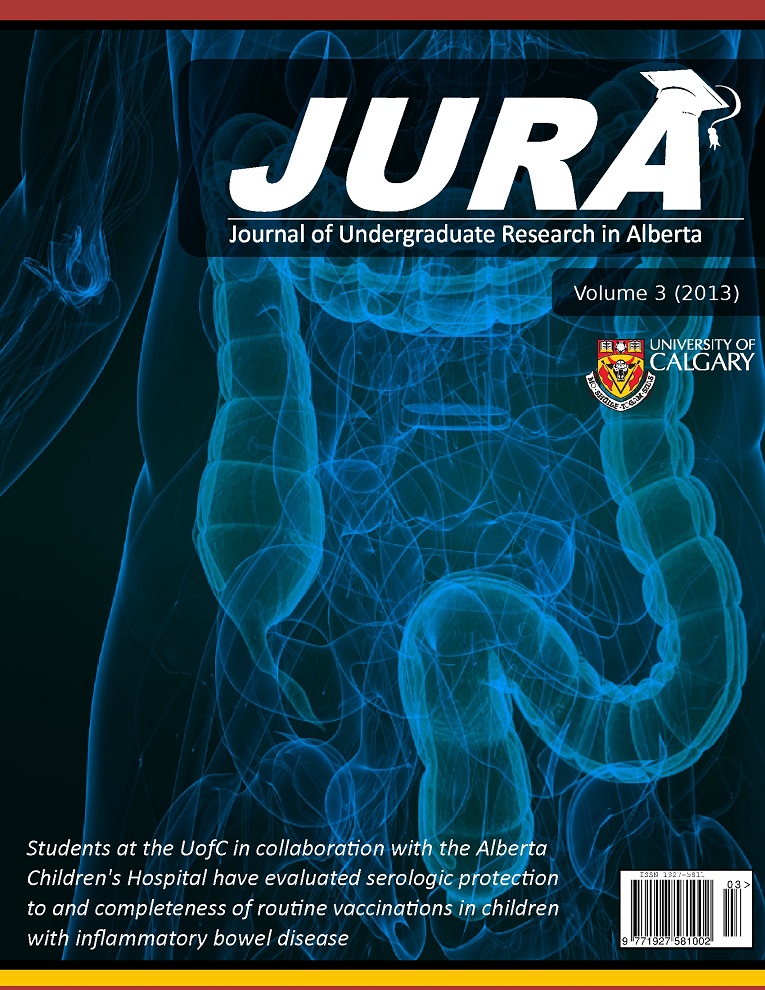Evaluation of metabolic monitoring implementation for children and adolescents under second-generation antipsychotics (SGAs)
Keywords:
Second-Generation Antipsychotics, metabolic monitoring, implementation, children, adolescentsAbstract
Introduction: The prescribed use of second-generation antipsychotics (SGAs) for children and adolescents with mental disorders has increased by 114% from 2005 to 2009 in Canada, even though the number of children in Canada has decreased slightly over the same period of time (1). The increased use of SGAs has caused more metabolic complications (2). In order to combat metabolic complications, the Canadian Alliance for Monitoring Effectiveness and Safety of Antipsychotics in Children (CAMESA) guideline group has proposed evidence-based recommendations (2). The objective of the study was to evaluate for the first time the rate of metabolic screening for children and adolescents under SGAs in Calgary. There has been no previous reported data available in Calgary regarding the screening.
Methods: A chart review was done for 57 active patients in Neuropsychiatry Services (NPS) of Alberta Health Services, Calgary, Canada. NPS is a multi-disciplinary outpatient clinic that specializes in mental health and neurological disorders of children and adolescents. All the patients were from 0 to 18 years old. The data for height, weight, BP, BMI, waist circumference, HDL, LDL, fasting triglyceride, fasting total cholesterol and fasting plasma glucose was recorded in the study. The data was only included if it was taken in NPS or if it was requested from any other services by a health care provider in NPS at least once.
Results: Out of the 57 patients in NPS 22 patients were prescribed SGAs. Patients treated with SGAs were more likely to go through metabolic monitoring than patients treated without SGAs. However, the rate of metabolic monitoring for both of the study groups was utterly disappointing. Moreover, the real life clinical scenario might be gloomier than it seem. A patient might need to go through metabolic monitoring more than once depending on the frequency and length of use of SGA. In the study, for each specific screening category a patient was considered monitored even if he/she was monitored only once.
Discussion/Conclusion: The low rate of metabolic screening for patients with SGAs suggests that even evidence-based national clinical practice recommendations such as CAMESA treatment recommendations cannot produce any tangible benefits unless they are implemented in the clinical setting. In an ideal world, all the patients should have their height, weight, BP and pulse measured every time they visit their physicians (The data for pulse was not recorded in the study). The lack of physical examinations for all patients in general was indeed disappointing, yet it might not be a unique problem in NPS. Studies have suggested that most psychiatrists do not examine their patients regularly (3). One third of psychiatrists have little confidence in performing physical examination or believes that they should be done by other physicians (3). Thus, the data from NPS on patients’ height, weight and BP might just represent a mere continuation of the unfortunate trend. Therefore it can be concluded that, pediatric psychiatric patients with SGAs ought to go through more frequent and regular metabolic monitoring.
Downloads
References
2.Ho J, Panagiotopoulos C, McCrindle B, Grisaru S, Pringsheim T, CAMESA guideline group. Management recommendations for metabolic complications associated with second generation antipsychotic use in children and youth. J Can Acad Child Adolesc Psychiatry 2011 Aug;20(3):234-241.
3. Garden, G. Physical examination in psychiatric practice. Adv Psychiatr Treat 2005; 11: 142-149
Downloads
Published
Issue
Section
License
Authors retain all rights to their research work. Articles may be submitted to and accepted in other journals subsequent to publishing in JURA. Our only condition is that articles cannot be used in another undergraduate journal. Authors must be aware, however, that professional journals may refuse articles submitted or accepted elsewhere—JURA included.


